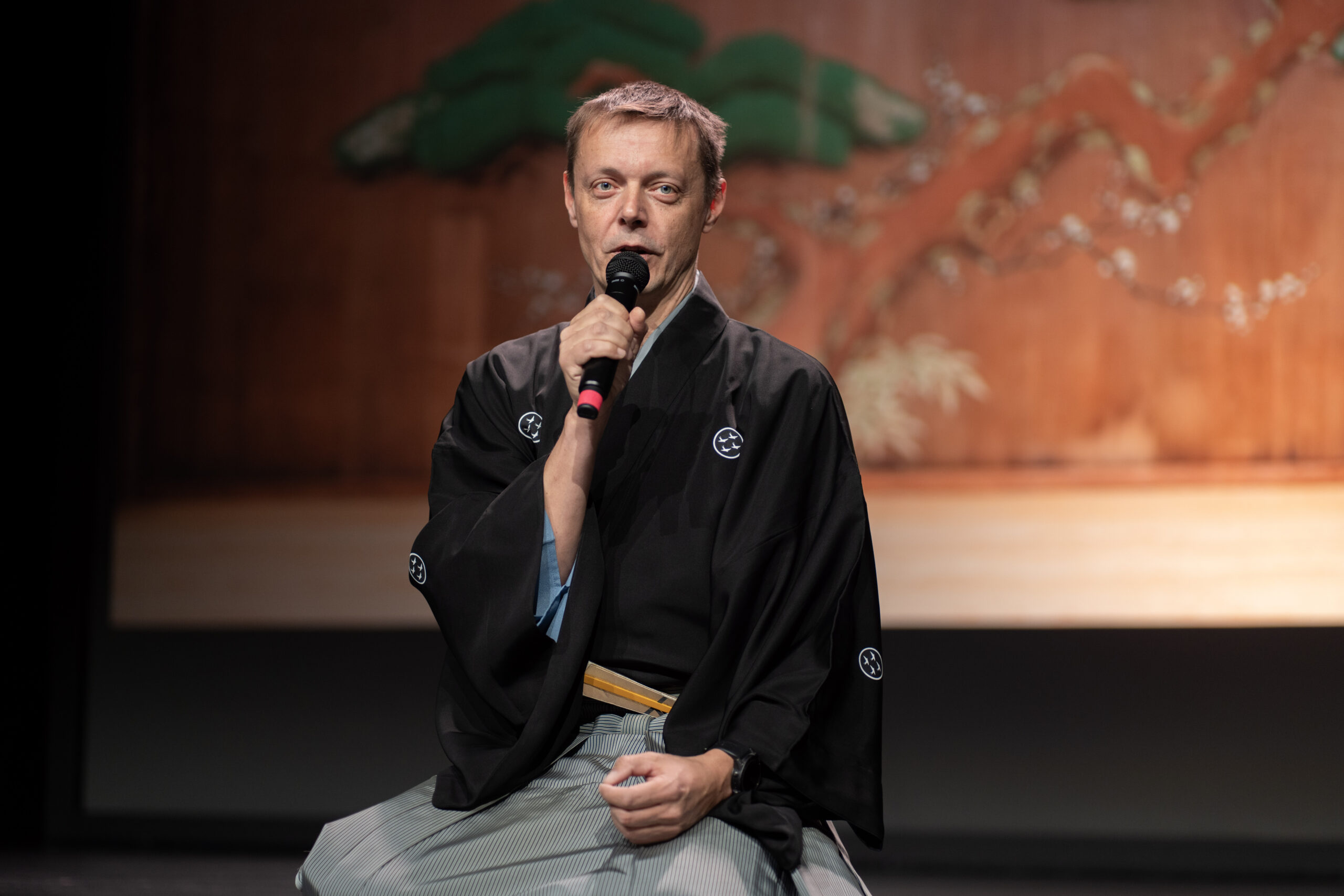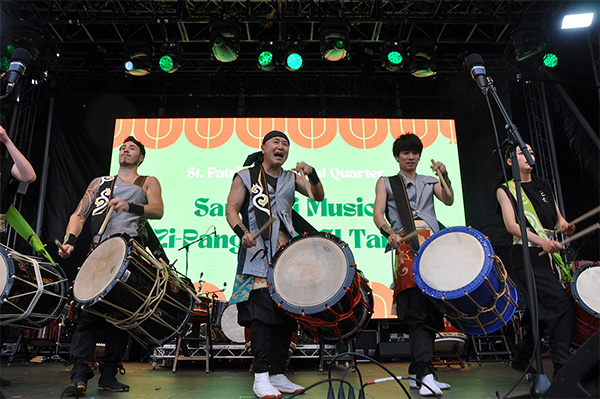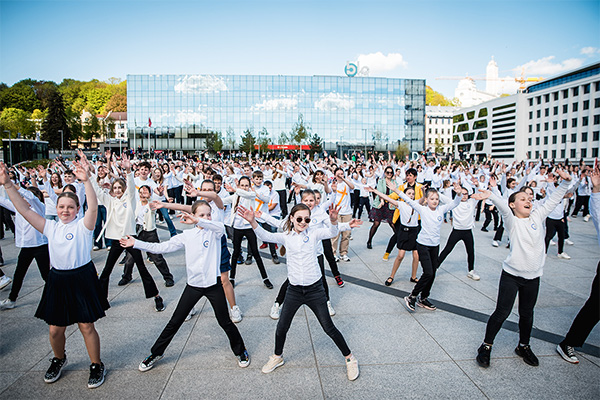Column
ColumnImportance of the Tradition, Power of the Culture
Each time we have a chance to collaborate directly with Japanese professional kyogen performers, deeply and strongly I feel, how tradition is important in the Culture. And how powerful Culture expression really is.
Term Tradition in Japanese is being expressed by word Dentó, written in characters 伝統 . Anticipating anything Traditional as just an old stuff is not a rare attitude in these days. However, The Japanese expression of Dentó sounds to me much less old that its English or Czech equivalent. It could be caused by the fact that I started learning Japanese as an adult person. And did not learn meaning of the words and characters naturally in native environment through my heart, but very heavily, through my brain, trying to find anything systematic in Characters system, what would save me from impossible mission of just memorizing them all. That could be the reason, probably, why in 伝統 I do not feel as an first impression „Obsolete“, but in its virtual characters meaning “Transmitted through families”.

This is exactly, where we have found biggest inspiration potential in Kyogen for its performing In Europe. Great shape and brilliance of the genre polished and cultivated in families for centuries did grow up to artistic forms of stage expressions and exact acting techniques. These techniques are exactly explained by teachers, can be studied by anyone and by Kyogen performances of our Troupe proved itself to be fully functioning even in completely deferent culture environment. To express it shortly, we do not perform Kyogen because it is old, oriental or Japanese. We engage ourselves in Kyogen because it is a great genre standing on exact performing techniques, called kata in Japanese.
These techniques – or kata do not limit actor in form. Contrary, this formal expression is giving us freedom to feel atmosphere in the house and react to feelings and expectations of the Audience. We can find this in European music. Musicians need to master scales, easy practice pieces, exercises, before they can start with music as a real art. However, we can hardly find this attitude in European Theatre. This is probably the main reason, why not only me and my colleagues, who are studying and performing Kyogen in Czech for more than 20 years, but namely new young performers in their twenties are joining our troupe and finds Kyogen worthy of spending time on its practice.
Exact shape and pattern we can follow on the stage give us time and freedom to play with timing of situations to the limits. And audience can enjoy pure joy and laughter on the level they had never experienced in different genres of comedy. But these techniques, shapes, pattens or kata were not invented during several performances or in a few years. Kyogen as a comedy genre is unbelievable complex. To save readers time and paper, let me mention just one example. It is called Jó – Ha – Kjú. Which means – Slow start – gradually speeding up middle – and fast end. In this rhythm should be performed not each play and flow entire performance itself, but in this pattern should be done also every single movement of the actor on the stage.
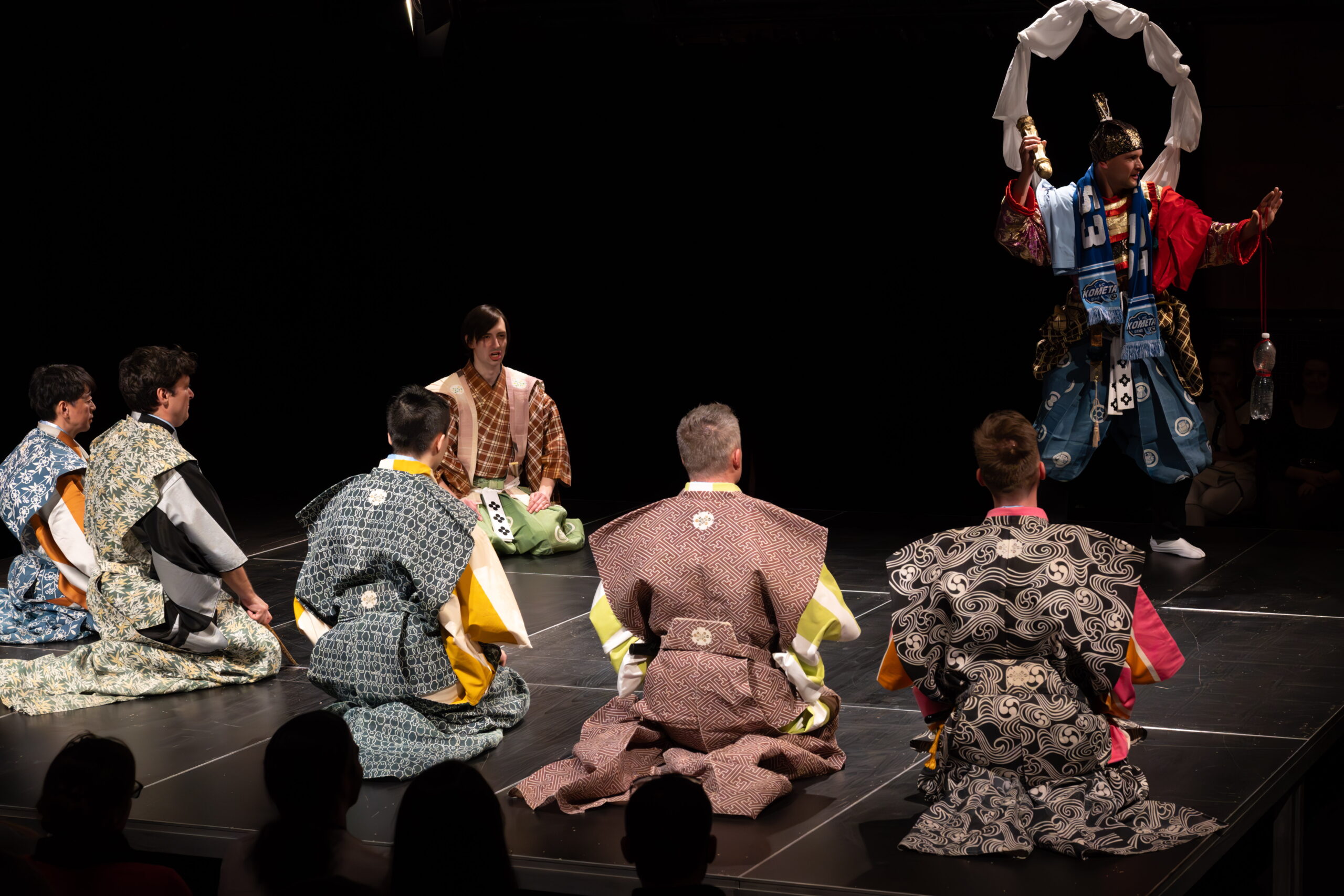
To build up such a deep and detailed system how to “just perform a play” took hundreds of years. And literally, in its pure 伝統 Dentó character meaning, this acting system was cultivated for generations in families and schools. Cultivated. Not just transmitted from one generation to another. Of course, it was not so simple and easy, but it can be said that what was for one generation goal and result, was starting point for the generation coming. We can see this not only in case of Nó and Kyógen. In Japanese traditional culture this is simply everywhere. Tea, Martial arts, Flowers arrangement, ceramics, Calligraphy… This deepness and to smallest details purified attitude is, in what Japanese culture is so unique. And fascinating for us foreigners. Even we cannot easily explain it in proper words. And where Japanese culture has great potential to inspire the rest of the world.
Using this system and under supervision of Kyoto based Kyógen Actor Shigeyama Motohiko, we successfully performed Kyógen play The Deity Nió this time. Two hopeless gamblers lose everything including their homes in gambling. Before fleeing out of the city they come up with last crazy idea how to “try a fortune” and make some money again. One is dressed up in the way, how looks statues of the Deity Nió. The other one spreads the rumor that behind the city miraculously appeared Nio’s statue. Trick works. Many people start to bring offerings. But as these two losers do not know when to quit, they fail again.
For us is extremely important to have a direct leadership from Japanese professionals. But interesting point is, that through the process of teaching foreigners, Japanese masters are seeing their art from new perspective. They need to answer questions they would never hear in Japan. “Why in this play story goes like this? How would you explain feelings of the main character?” Japanese students usually just follow master’s lead. And are not asking “stupid” questions. On the other hand, we Europeans do not feel rude to ask. No, We would feel not appropriate NOT to ask, if we have a chance to ask professionals, who are studying this genre since they can barely walk and talk at age around 3 years. As a result, Motohiko mentioned several times, that after leading workshops and performed in Europe, his insight into psychology of characters had deepen significantly. And had enhanced his performances for Japanese audience in Japan. Doing Japanese traditional Theatre between Europe and Japan, or better say anything Japanese with long tradition between Europe and Japan is enhancing both involved parties. Czech students as well as Japanese masters.
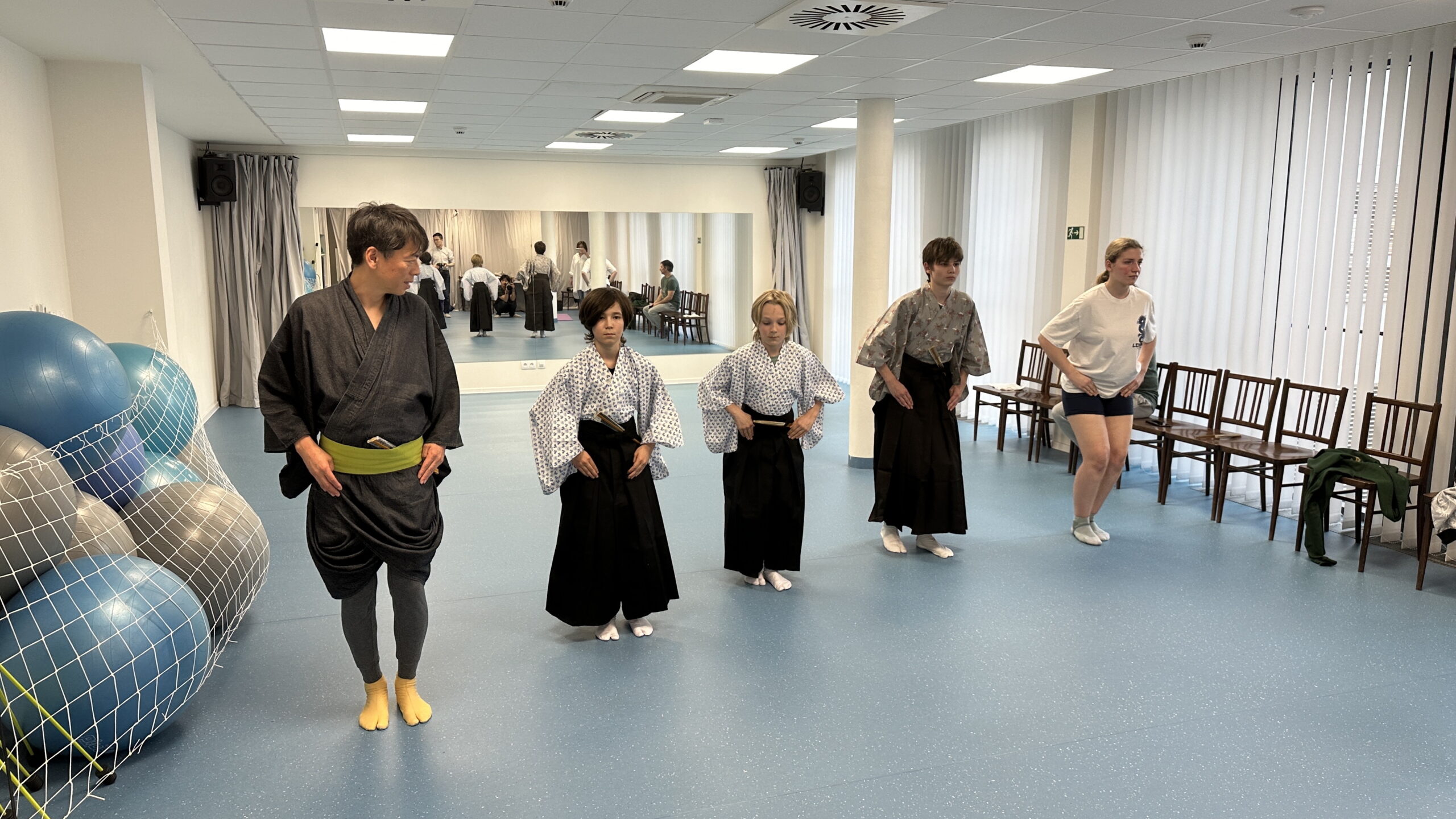
This is kind of a challenge for the future, and I wonder, to how deep levels this can go. We have already started “Kids Kyogen Studio” in 2014 and we did Czech “Kodomo Kyogen” performance in Kyoto in 2019. Now, we work with schools in Czech as well as in Japan, using traditional Japanese comedy as a universal tool for uncovering human nature. Since last year I personally do on-line presentation for Junior high schools in Japan in English. All this is far beyond what we had ever dreamed off. In 2025 we are again planning study trip to Kyoto and performance there. My personal goal for years to come is Kyogen club for kids in Prague, using Kyogen not only as a comic theatre, but as a tool for kids to improve their ability to speak in front of a public with stronger self-confidence and get them find, that they can really attract attention of the audience. Thinks which probably cannot be replaced by AI or any technological development.
600 years old play portrays in excellent way imperfection of us, human beings. As centuries pass, technological development is getting over thinkable limits. On the other hand, we as a human, are imperfect as we were centuries ago. This message to the audience from Kyógen is even stronger, when is performed in Europe in Czech language. Based on some opinions, original purpose of Nó was to bring audience to the enlightenment through the theatre. I am not sure we are enlightening people, but Kyógen humor forces people to think. Which seems to be crucial especially nowadays. And I am so happy, that through Japanese traditional theatre, we could be part of it.

